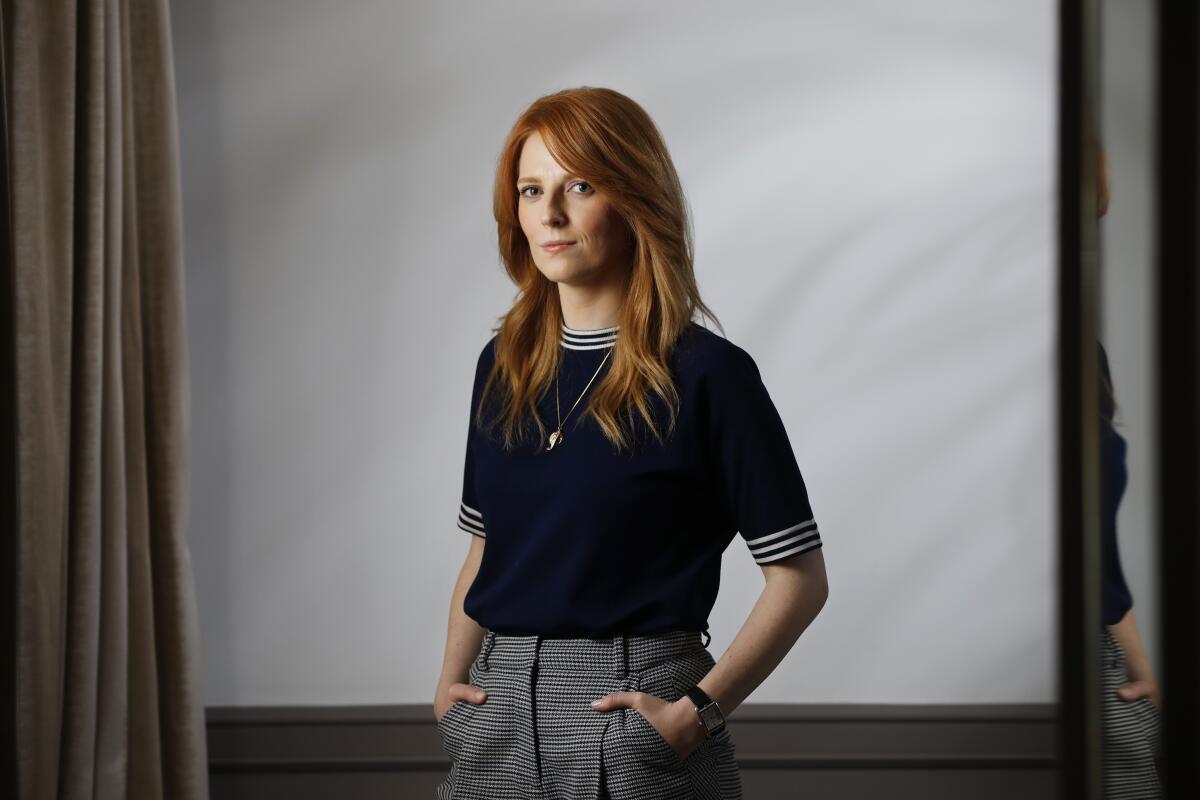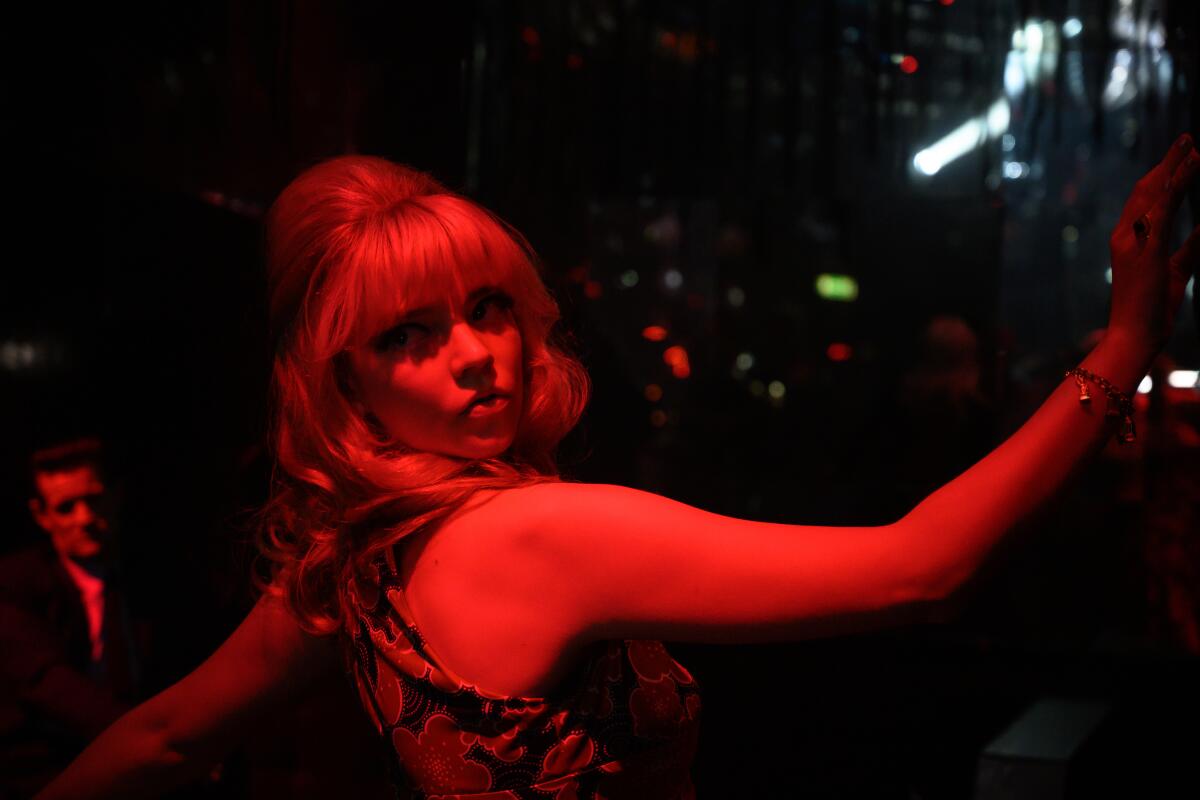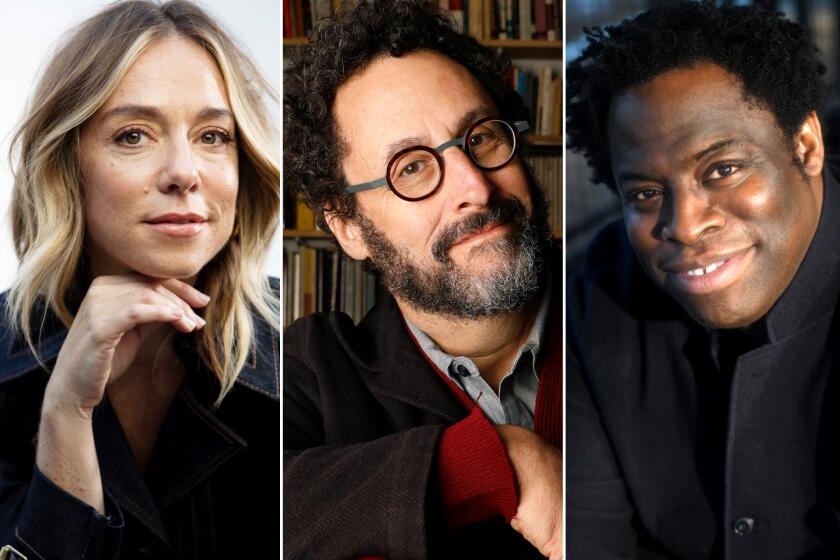A sketchy life in London’s seedy Soho? This writer embraced it all

- Share via
All writers are cannibals — I mean this mostly in the metaphorical sense. I have always felt like we feast on people, on their stories, their lives, their witty lines, their deep dark secrets. And few places do you hear more deep dark secrets than at 11 p.m. behind a bar in London’s Soho.
This was where I spent most of my 20s, behind the bar at the Toucan, where I was gorging on all the anecdotes and experiences that the punters would offer up to me. One had dated the drummer from the Rolling Stones, and she had been left by him, heartbroken in Paris without a passport at 16. One was a dominatrix who would, in graphic detail, tell me about her clients and what she thought the lonely truly yearned for. One had been in the IRA and helped to “build car parks” — slang for blowing up buildings. There were thousands, and I was their confidant, mainlining those lives they had lived.
I would scribble notes on coasters, scraps of paper, in my phone or on my hands. These were better than tips, I used to think to myself, although I can assure you I was desperately in need of cash — please tip your bartenders.
In their own words: Tony Kushner, Rebecca Hall, Jeymes Samuel and other screenwriters take us on a journey through writing their film scripts.
Afterward, I would walk through the run-of-the-mill street harassment, “Oi, Red, do the curtains match the carpet?” passing at least two brothels, then into my apartment above a strip club, where the dull sounds of late ’90s euro-pop would sneak up through the floorboards as I would try to write screenplays.
Out back, the strippers, now off the clock, would smoke cigarettes and debrief. I would lie in that tiny studio apartment and listen to them, to their jokes and their horror stories, to this seedy world that was so far away from my very safe and comfortable childhood. And I would have these crises in that room — What am I doing with my life? How the hell does anyone go from this to actually making it in film?
I was broke and had zero prospects, my gran was dying of Alzheimer’s, my mum was looking after her all on her own, and I was 400 miles away, working in a bar. Collecting minimum wage and these scraps of stories.
I should have quit. The problem was, I loved it. I loved Soho. I loved those people. I especially loved the weirdos and the damaged ones. And I couldn’t find them anywhere else. No one was making stories set in the real Soho. I never saw it on screen, never felt like anyone else was watching or listening.
I wasn’t much for chronicling. I didn’t want to document every facet of this seedy square mile, but I wanted to see something that felt frightening, scintillating and thrilling — that conveyed what it felt like to be in Soho when the witching hour strikes and you find yourself all alone and vulnerable, around people who are rarely what they say they are. I wanted something undulating, which all good (and even all bad) nights out in Soho feel like … there is always the hint that the wrong wave may carry you and drag you under.
But then I sold a script, and I moved to Notting Hill, and I started going to dinner parties and acting like I was a professional. Carrying around this past that seemed to belong in someone else’s life. I felt adrift.

Edgar Wright and I met, of course, in Soho. We first had drinks in a very prim and proper members’ bar. Which just so happened to be opposite the strip club and my old apartment. The minute I told Edgar this, he realized my credentials as a fellow “Soho person.” And off we went on a night out, leaning into the darker side of that neighborhood that draws both of us in. He had a story to tell me, and it just needed the right setting.
So, I was our tour guide to my old haunts. The dingy basement bars and the after-hours clubs that always seem to be full of actors after the curtain drops, bartenders after their shifts, artists on their last few quid, and criminals on the hunt.
There, in the corner of one of those dens of iniquity, he told me the story that would become “Last Night in Soho,” and he asked me to write it with him. It was like two opposed pieces of my existence clicked together. Those strange encounters with punters when I was in the bar; the men on the street that would catcall, or sometimes chase me to my door to try and get inside on my walk home from work; those empty doorways with signs that said “models” where you could just catch a glimpse of a woman’s feet in high heels at the top of the stairs; those nights out where someone looked at you and you just knew, “I am no longer safe here.”
Soho had been rattling around inside me for years, trying to find a way to be expressed. To Edgar’s offer, the answer was an easy yes.
Writing “Last Night in Soho” was the first time I ever got to feed on my own life. All those scraps of stories I had saved and carried, all those moments filled with joy and laughter and the ones filled with terror. I got to return to it, to glue two sides of myself together and to exorcise all of it. Letting it live on the page, and now on the screen. I hope you enjoy it, or, rather, I hope you feel about “Last Night in Soho” the way I feel about Soho, that it both terrifies and delights you. Go buy a ticket and feast on a bit of my life — it’s turning out to be a damn good one.
More to Read
From the Oscars to the Emmys.
Get the Envelope newsletter for exclusive awards season coverage, behind-the-scenes stories from the Envelope podcast and columnist Glenn Whipp’s must-read analysis.
You may occasionally receive promotional content from the Los Angeles Times.











